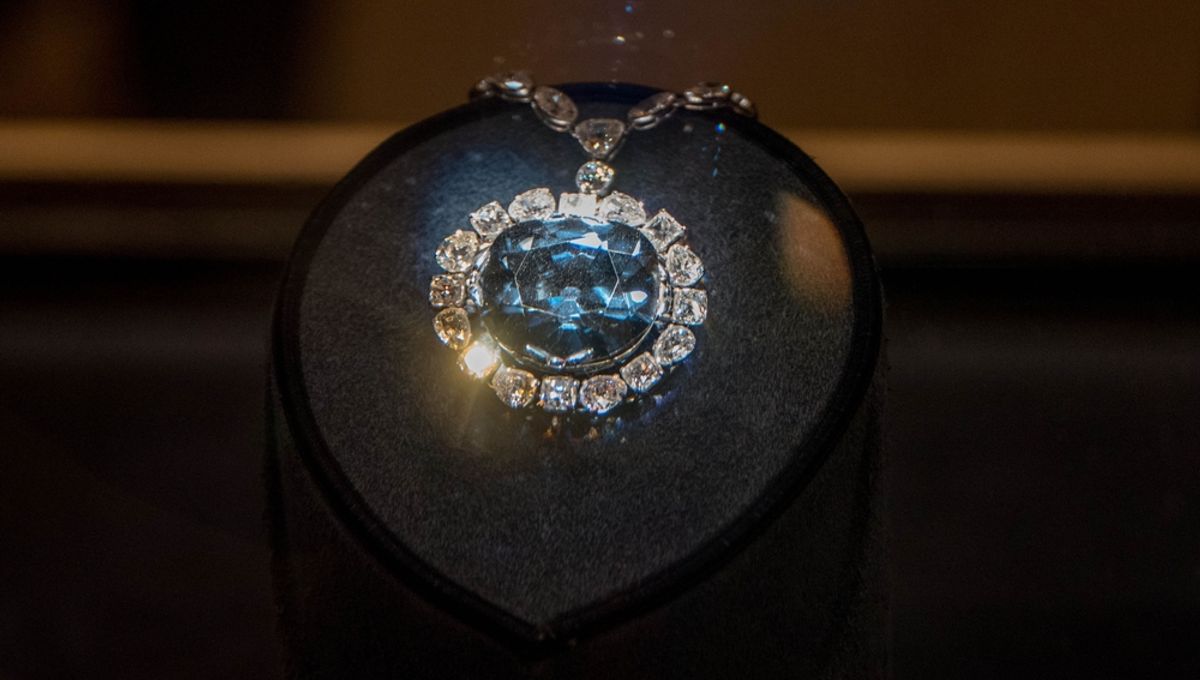
There’s a centuries-old myth that whoever owns the Hope Diamond will inevitably fall into misfortune. Taking a quick look at a few of its ill-fated owners, it’s easy to see how this tall tale came about.
The Hope Diamond is a 45.52-carat diamond, measuring around 25.60 millimeters by 21.78 millimeters by 12 millimeters (1 inch by 0.9 inch by 0.4 inch). As a result of trace amounts of boron, it glimmers with a slightly steely-blue color.
It’s known as one of the world’s most famous (or should that be infamous?) diamonds with a value of around $250 million. By some counts, that makes it the third most valuable diamond in existence.
Since 1952, it has quietly sat in the Smithsonian’s mineral and gem collection at the National Museum of Natural History, but in its heyday, the diamond was an extremely well-traveled object.
The story of the Hope Diamond started approximately 1.1 billion years ago in the bowels of Earth. Subject to intense heat and pressure, carbon atoms formed extremely strong bonds with each other, crystalizing into the form of a diamond.
It was likely unearthed in the 17th century at the Kollur Mine of Golconda, India, where a number of prominent diamonds have been found over the centuries.
In 1666, it fell into the hands of French gem merchant, Jean-Baptiste Tavernier, who obtained the gem in India. It became known as the Tavernier Blue and was sold to King Louis XIV of France. It was passed down the family and, around a century later, it came into the possession of Louis XVI and his wife, Queen Marie Antoinette, the last monarchs of France before the French Revolution. In this era, it acquired the name “The French Blue.”
These were dangerous times to be a royal decked out in priceless jewels. Amongst the turmoil of revolutionary Paris, a mob ransacked their property and looted the French crown jewels in September 1792. The following year, Louis XVI and Marie Antoinette were executed – in classic style of the French Revolution – by guillotine.
The next part of the Hope Diamond’s story is murky. We do know, however, that a blue-ish diamond of the same size and shape was documented to be in the possession of London diamond merchant Daniel Eliason in September 1812. It was around this time it was bought by a wealthy banker called Thomas Hope, for whom the diamond is named.
In 2005, crystallographers used computer analysis to conclusively prove that the Hope Diamond that emerged in 1812 London was the same “French Blue” jewel that was in possession of the doomed French Royalty.
Over the 19th and early 20th centuries, it was traded between a number of wealthy individuals. One of the best-known was Evalyn Walsh McLean, an American mining heiress and socialite, whose husband Edward bought it from Cartier Jewelers of New York for $180,000 in 1911.
The diamond had picked up a reputation for being cursed, but McLean continued to flaunt the diamond, including on her trip to the White House.
In the decades following, it is safe to say that unfortunate events did taint the life of the socialite: her son died in a car accident, she fell into financial ruin, she developed severe mental health problems, and became addicted to morphine. She also went through an ugly divorce with Edward, who later died in a psychiatric institution.
Of course, we could never condone the idea that an inanimate object can subject anyone to a curse. Instead, it seems that the story is a blend of historical half-truths, sensational media reports, and humans’ desperate need to seek explanations for meaningless tragedy.
Source Link: Hope Diamond: Legend Of A Curse Follows This Precious Jewel